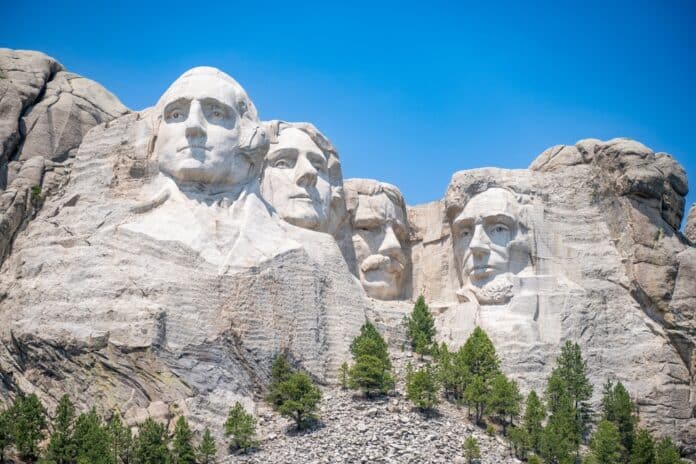Mount Rushmore is one of the most iconic landmarks in the United States, with the faces of four great presidents carved into the Black Hills of South Dakota. Each of these presidents was chosen for their significant contributions to the nation’s history and development. Let’s dive into five interesting facts about each of the Mount Rushmore presidents: George Washington, Thomas Jefferson, Theodore Roosevelt, and Abraham Lincoln.
1. George Washington: The Reluctant President
George Washington, the nation’s first president and one of its founding fathers, is known for leading the country through its formative years. What many people may not know is that Washington was reluctant to become president. He initially retired after the Revolutionary War to his plantation at Mount Vernon, content to live a quiet life. However, he was unanimously elected to be the first president of the United States in 1789, and despite his personal desire to step away from politics, he understood the need to guide the young country through its early challenges.
- Fun fact: Washington set the tradition of only serving two terms, although it wasn’t made into law until 1951 with the 22nd Amendment.
2. Thomas Jefferson: The Architect of the Declaration of Independence
Thomas Jefferson, the third president of the United States, is perhaps best known as the principal author of the Declaration of Independence. His vision for the United States emphasized individual liberty, democracy, and a strong separation between church and state. But beyond politics, Jefferson was a polymath who had wide-ranging interests in everything from architecture to agriculture.
- Fun fact: Jefferson was also an avid inventor. He is credited with creating the swivel chair, and it’s believed he wrote the first draft of the Declaration of Independence while sitting in one!
3. Theodore Roosevelt: The Conservationist President
Theodore Roosevelt, the 26th president, was a man of action and energy, well-known for his efforts in conservation and environmental protection. He established five national parks and set aside over 230 million acres of public land for national forests, wildlife refuges, and federal reserves. His love for nature began in his childhood, and as president, he pushed for laws that helped preserve America’s natural beauty for future generations.
- Fun fact: Roosevelt was awarded the Nobel Peace Prize in 1906 for his efforts in negotiating an end to the Russo-Japanese War, making him the first American to win the prestigious award.
4. Abraham Lincoln: The Self-Taught Lawyer
Abraham Lincoln, the 16th president, is celebrated for leading the United States through its Civil War and for his role in abolishing slavery. However, many people don’t realize that Lincoln’s path to the presidency was far from easy. He had less than a year of formal education and was mostly self-taught. Through sheer determination, he became a successful lawyer, politician, and eventually one of the most revered leaders in American history.
- Fun fact: Lincoln was a talented wrestler in his younger years. He reportedly won nearly 300 matches, earning him a place in the National Wrestling Hall of Fame!
5. The Hidden Story Behind Mount Rushmore’s Creation
The four presidents chosen for Mount Rushmore were selected to represent the nation’s birth (Washington), growth (Jefferson), development (Roosevelt), and preservation (Lincoln). However, the original idea for Mount Rushmore was quite different. The project’s designer, Gutzon Borglum, initially planned for the figures to be from the waist up. Due to financial constraints and time, the project was scaled back to just the heads of the four presidents.
- Fun fact: Mount Rushmore took 14 years to complete, from 1927 to 1941, and was never fully finished to Borglum’s original vision.
The four presidents on Mount Rushmore represent some of the most important moments in American history. From Washington’s leadership during the Revolutionary War to Lincoln’s preservation of the Union, each of these leaders left a lasting legacy. Mount Rushmore serves as a tribute to their impact, and these fascinating facts add depth to their already monumental legacies.

